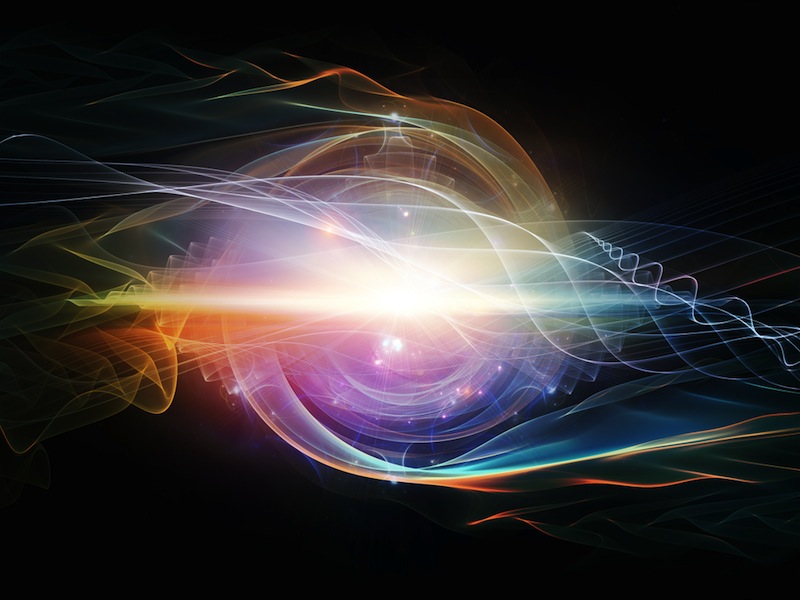Quantum batteries could charge faster by scrambling the rules of cause and effect
Batteries could charge up by relying on a quantum effect known as indefinite causal order, whereby the laws of cause and effect are scrambled and power can move through the system quicker.

Quantum batteries of the future could gain charge by breaking the conventional laws of causality, research has shown.
Conventional batteries charge by converting electrical energy into chemical energy on the scale of vast numbers of electrons.
But in a new proof-of-principle experiment researchers have demonstrated how a weird quantum effect may lead to batteries that charge faster and with more efficiency by scrambling cause and effect, according to research Dec. 14 in the journal Physical Review Letters.
Related: Electricity flows like water in 'strange metals,' and physicists don't know why
Causality, or the relationship between cause and effect, is not always straightforward in quantum mechanics, the strange rules that govern the world of the very small.
"Normally, if event A comes first and causes event B, it is assumed that B cannot in turn cause A at the same time," co-first author Yuanbo Chen, a physicist at the University of Tokyo, told Live Science. "However, recent advancements in theoretical physics propose that in certain frameworks, scenarios where 'A causes B' and 'B causes A' could simultaneously be true."
The principle of quantum superposition enables particles to exist in many different states at once, at least until they are observed and "pick" a state to land in.
Get the world’s most fascinating discoveries delivered straight to your inbox.
Any property of a quantum object (such as its momentum, location, or, in the famed case of Erwin Schrödinger’s hypothetical cat, whether it’s alive or not) can exist in superposition — a probabilistic jumble of every possible state that only collapses into a definite outcome when the object is viewed.
This realization has led physicists to conduct all kinds of bizarre experiments that contradict our intuitive notions of what should be possible, including ones where a single particle can both exist and not exist in many different places at the same time.
But superposition doesn’t just mess with our intuitive sense of space, it scrambles our sense of causality too. In 2009, physicists used a device called a quantum switch to observe a phenomenon called indefinite causal order. By sending a light particle, or photon down a pair of diverging paths, the physicists caused it to split into two possible versions of itself — one which went down the first path, and the other the second.
Then, depending on the path the photon took, physicists applied two different processes in a different order depending on the path. The result was a photon that had its causality jumbled: it was in a quantum superposition where both orders of events were true.
"Say that we have two processes: A and B," Chen said. "With a quantum switch, you can create a superposition of (First apply A and then B) and (First apply B and then A)."
Chen and his colleagues wondered if they could incorporate this into a quantum battery, a proposed device that could theoretically store the energy of photons and charge faster than conventional electrochemical batteries.
They compared three charging methods: connecting two chargers to a battery sequentially, simultaneously, or in a superposition that made it impossible to tell the order of input.
Their calculations showed that the superposition method would enable a low-power, causally-scrambled charger to deliver more energy more efficiently than a conventional high-power charger.
They followed up their calculations with a proof-of-principle experiment using light. By sending photons through a quantum switch with two possible paths, the researchers split the light particles into two possible versions of themselves, each one traversing a different path.
Then, after subjecting the light to two inputs that would polarize them in a different order (A then B or B then A) based on the path they were on, the researchers measured the polarization at the end and found that the individual photons had been causally scrambled.
Having tested their protocol, the scientists say their next challenge is to create a physical quantum battery that can hold a charge. However, the first experimental evidence for a quantum battery was only published last year, so it may not happen any time soon.
"Given the current situation characterized by limited experimental efforts and ongoing theoretical exploration in the realm of quantum batteries, it is challenging to estimate a precise timeline for achieving conclusive outcomes," Chen said.

Ben Turner is a U.K. based writer and editor at Live Science. He covers physics and astronomy, tech and climate change. He graduated from University College London with a degree in particle physics before training as a journalist. When he's not writing, Ben enjoys reading literature, playing the guitar and embarrassing himself with chess.


